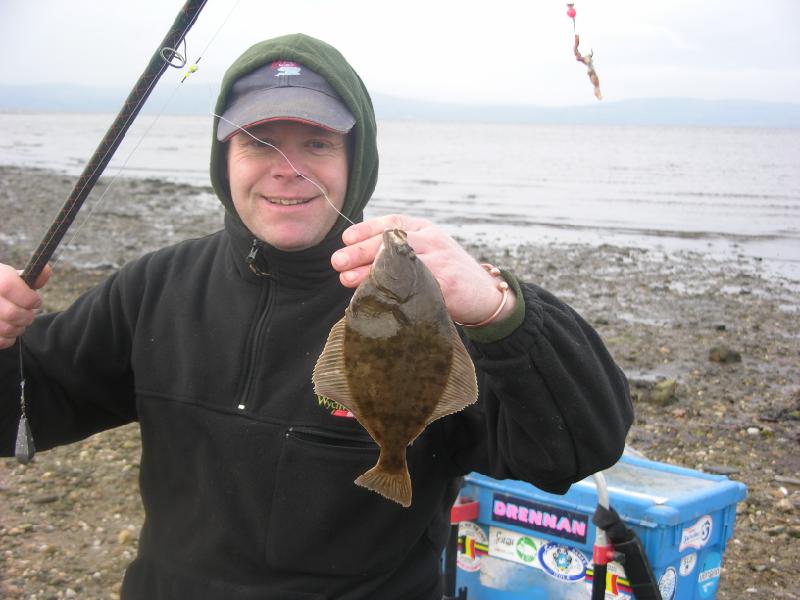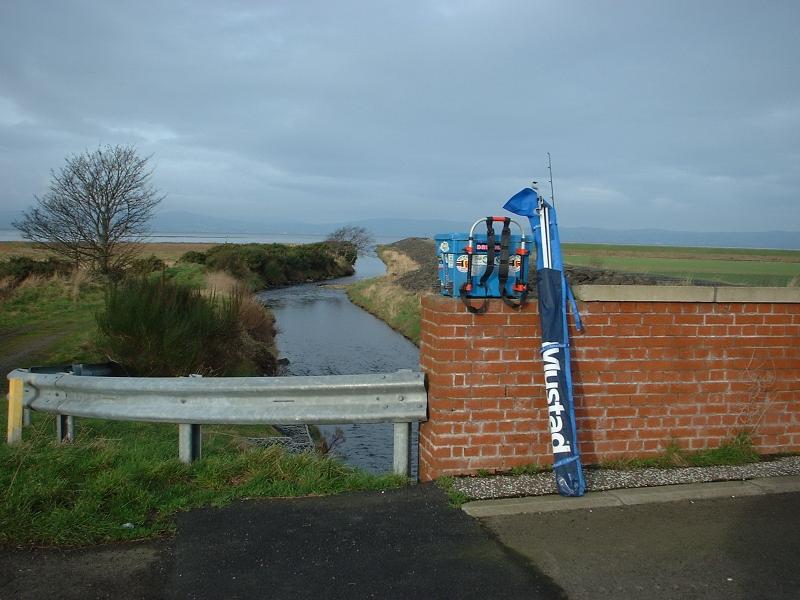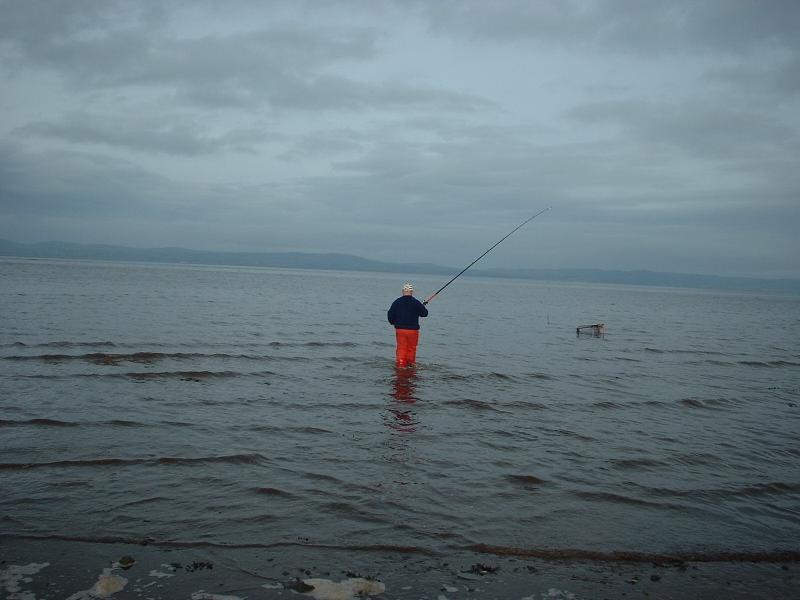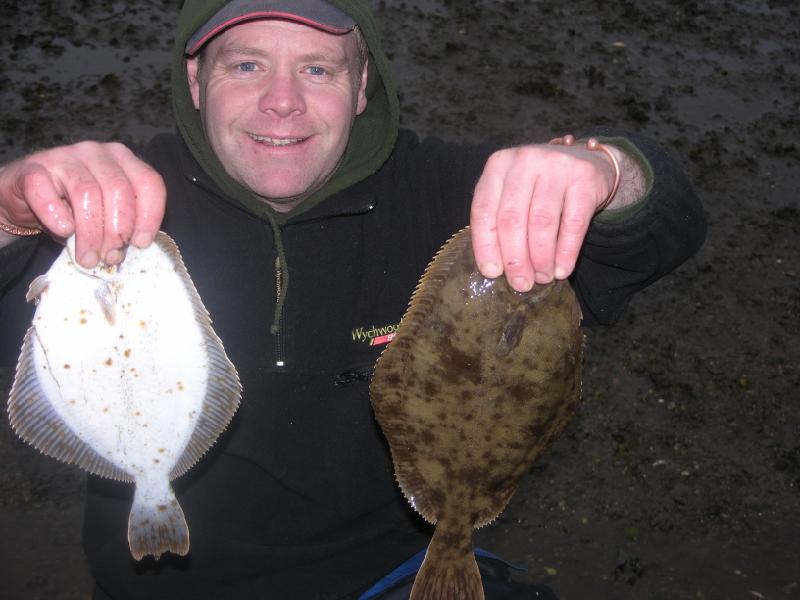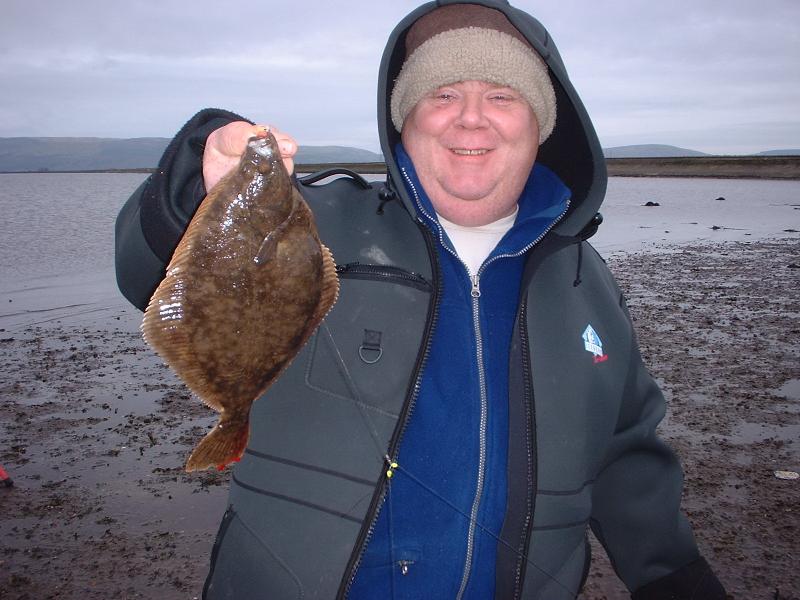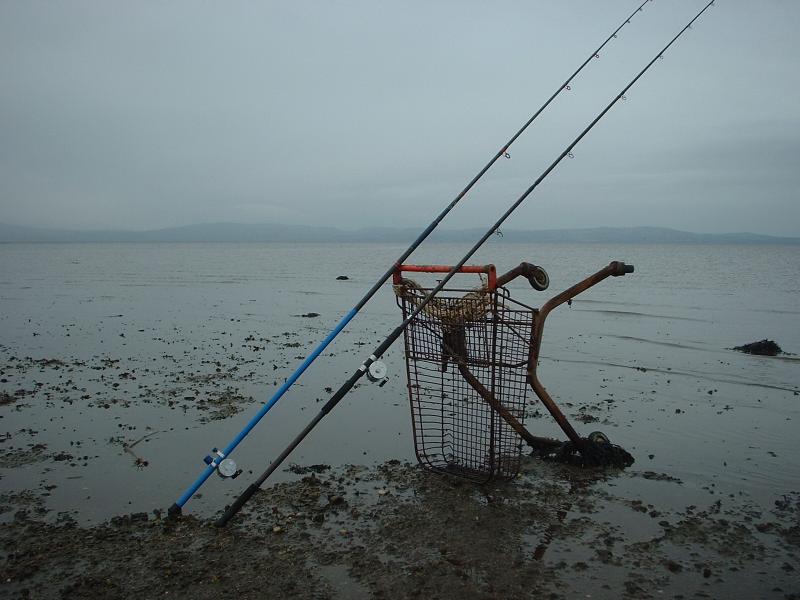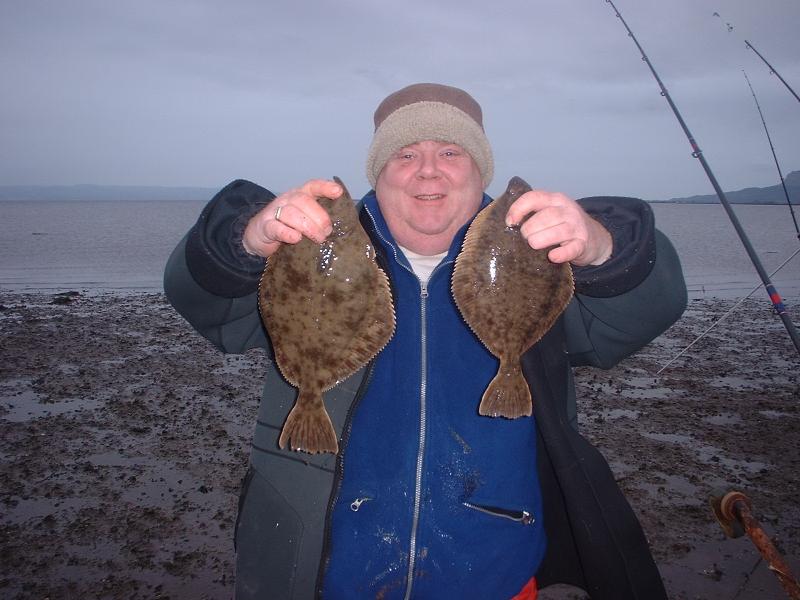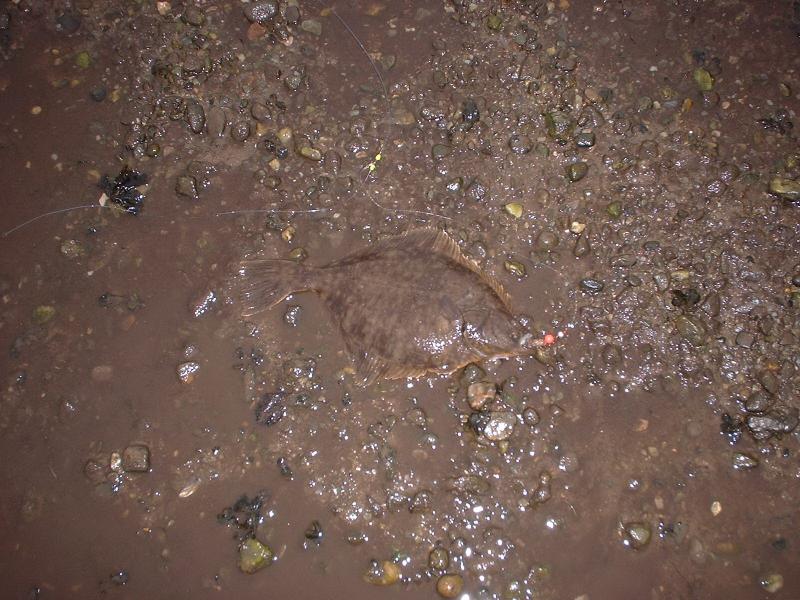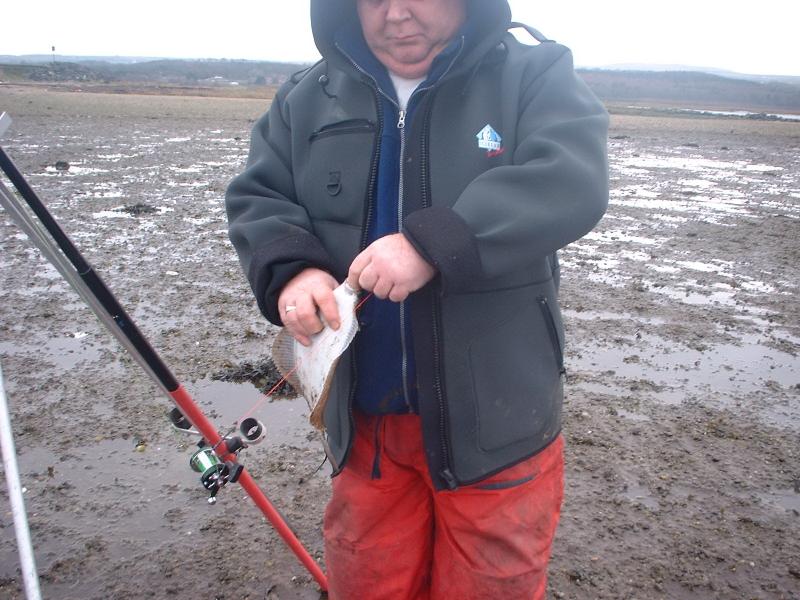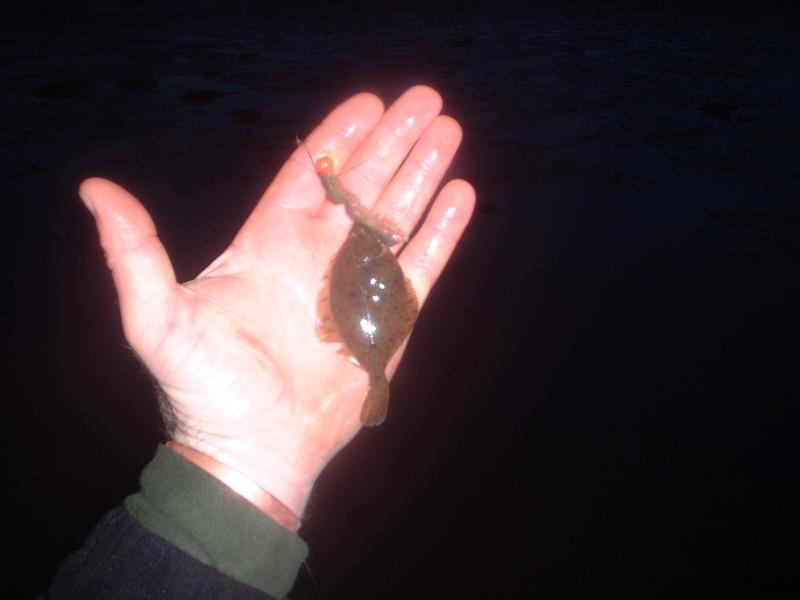Ballykelly Strand
Targeting Flounder on the North Coast
It has been quite some time now, since my beach-casting gear has seen the light of day.
When my old angling mate, big Phil gave me a call suggesting a bit of “flattie-bashing” at the week end, I took him up on the idea and we put our heads together on deciding a suitable venue to target.
There are many shallow surf beaches around the north coast that have the ability to produce reasonable Flounder fishing throughout the winter months, if left in peace. We are all aware of how commercial pressure has affected even this small species and angling results are simply a shadow compared to ten years ago. However, some shore marks are still worth spending a few hours in search of the humble Flounder. Phil suggested a shore mark I had taken him to several years ago, one which fished remarkably well on that occasion. To be honest, I am not exactly sure of its name, but it is a part of the Foyle estuary in Limavaddy, at Ballykelly village. Shaun Flemming had suggested this mark to me some years ago. As a local angler and tackle dealer, he knew the Foyle estuary well, and acting on this information I decided to give it a try.
What a day it turned out to be, landing twenty- seven fish to two and a half pounds, along with five Sea Trout as a bonus. Subsequent trips failed to live up to that great day of shore angling, but in saying that; I have yet to blank on this venue. Unfortunately, this is a statement that cannot be made regarding most of our other shore marks. The decision had been made to head for the Foyle estuary on the following Sunday morning. As with all angling trips, a small amount of preparation was required. Unfortunately I am not quite as fit as I used to be, especially when it comes to bait digging, but a quick call to Alister Smyth of Tight Lines Tackle, Belfast secured two pounds of fresh ragworm, more than enough for a days angling.
Preparing for the "hike"
With bait sorted, attention was now on the beach gear. It’s amazing how “out of sorts” tackle can become when not in use. From previous experience, the Ballykelly mark requires a bit of a walk, and it is important to travel as light as possible. Looking through the rod holdall, I had to remove a few of my favourites that normally go to every beach venue with me. First out was my trusty pair of Zziplex rods, almost as old as me, followed by an Abu Suveran and a very “pokey” Century Vectra. I opted for the light Conoflex “flattie fanatic” to use for close in work, and the Century “tip tornado”, a light and slim blank with plenty of backbone for distance casting, should it be required.
I prefer to use Abu Rockets and Mag Elites for light shore angling, and they have always performed impeccably. There are many fabulous reels on the market today, but to date, I have never felt the need to change. As the saying goes, if it aint broke, don’t fix it! With the beach kit gathered up and sorted out, the only thing left to check was the rig wallet. This was lacking somewhat in the Flounder department, so a couple of hours were set aside on Saturday night to tie up half a dozen three-hook paternosters with small attractor blades and beads, along with a couple of clipped down rigs to “punch” out with the Tip Tornado.
Phil, going for a "short lob", Flounder hug the shore-line
Sunday morning saw us arrive at the Station Road car park, Ballykelly, and my first thoughts turned to the long walk ahead of us. It was a wise decision to cut back on the mountain of tackle I usually force myself to carry. It was great to see this part of the Foyle estuary again, as the memories of previous trips came flooding back. Standing at the waters edge, it positively “screams” Flounder. The shallow water and muddy sea- bed strewn with gravel, stones and shingle, along with deeper lagoons and mussel beds are all great Flounder clues. There is also the obligatory fresh water stream meandering across the beach, usually a good fish- attracting feature. We were soon baited up and fishing, but with little success over the first couple of hours. This is not unusual for this venue, and I recalled that on the previous trip I had to roam about in search of the fish, rather than wait for them to come to me. Another good reason for travelling light!
Nice to get a double-shot
After a few hundred yards and several fruitless casts, the rod tip finally gave a nod and I soon had a small flounder to pose for the camera. With the fish located, big Phil came over and joined in, eventually landing some fine fish that pushed the scales round to the two- pound mark. As on previous occasions, the bites stopped as quickly as they had began but this was simply due to the fish dropping back to deeper water as the tide ebbed. By moving along the shoreline, the flounder can usually be found again for continued action. As the shoreline is so shallow in these parts; the tide tends to drop extremely rapidly. It is important to keep on the move, staying in contact with the fish for a successful day.
Phil looks well-pleased with this decent Flounder
As this particular area of the Foyle estuary is reasonably sheltered from the elements and strong tidal currents, heavy shore tackle is un-necessary. This allows for the use of lighter rods and lead weights between one and four ounces. It also maximises sport, especially when using fine, non-stretch braid as main line. We continued catching until the tide dropped to its lowest mark. Deciding to call it a day, we packed up before the light faded and prepared for the long walk back. All fish were returned, including a small sea trout that had been tempted on the second rod that I had cast out as far as I could manage. It is interesting to note that no Flounder had come to this rod.
Making use of the habitat! How?Why? I give up!
Some readers may wonder what the attraction is when it comes to Flounder-fishing, a question I have asked myself on several occasions. This is even more bewildering when I think of the times I have battled with hard-fighting Tope or one hundred pounds plus common skate. To be honest, I am not exactly sure but I think it boils down to the whole angling experience. Flounder are a small but delightfully obliging species. They are remarkable in many ways, not least their amazing ability to transcend the saltwater-freshwater barrier. I have caught Flounder on the river Barrow in Carlow, some fourteen miles upstream of saltwater whilst fishing for Eels, and I remember being plagued with them on Newry Canal whilst match angling for Bream and Roach. Personally, I believe it is interesting to target species in new surroundings. Trying out new methods and adapting old skills to deceive a fish is, for me, the whole essence of angling. It is this belief that has taken me the length and breadth of Ireland, targeting the diverse and varied list of fish species our country has to offer. It is now up to us to preserve and protect these species for future generations to enjoy.
A double-shot for Phil
Top tips
TIP 1
On the north coast, the best flounder fishing is from October through to February. In this period, fish are feeding heavily along the shoreline in preparation for spawning, before they move out to deeper water.
TIP 2
It is rarely necessary to cast beyond the thirty- yard mark when targeting Flounder. They hug the shoreline in search of marine worms and crustaceans dislodged by tidal and wave action. Do not over-cast.
TIP 3
Experiment with the size and shape of lead weights being used. Try to pick a lead weight that is light enough to allow a baited rig to drag or roll slowly across the sea- bed. Flounder, similar to Plaice, are inquisitive creatures and will investigate anything that moves across their field of vision. Beads and spoons create colour and disturbance and tend to work quite well. Also, a slow-moving bait will cover a larger area, seeking out underwater hot spots.
TIP 4
Fresh ragworm, lugworm and peeler crab are all top Flounder baits. Add a small strip or triangle of Mackerel strip to a baited hook for a deadly cocktail.
TIP 5
A large bunch of small harbour rag creates a mass of wriggling tails that Flounder find irresistible.




